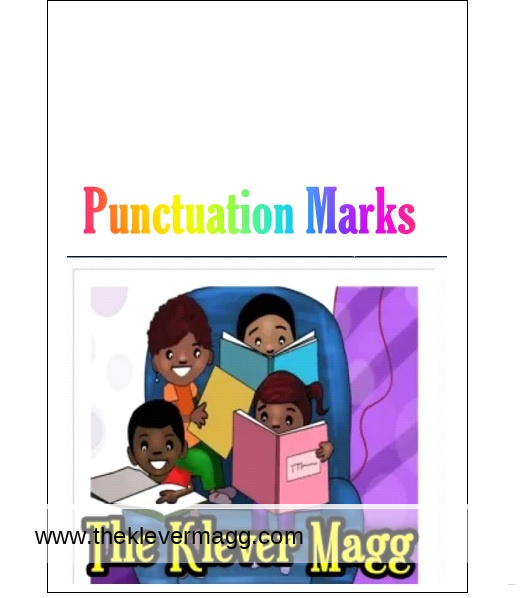Lesson on Punctuation Marks
Writers use sentences to express their ideas and describe scenes and events in a story.
According to the Oxford Dictionary, a sentence is “a set of words that is complete in itself, typically containing a subject and predicate, conveying a statement, question, exclamation, or command…”
Thus, it becomes very necessary to know when a sentence is finished and another should begin.
Sometimes in writing, one needs to show a pause in a sentence to make it clearer to readers. Other times, one needs to ask a question or explain a statement or list items.
One can do all of these with punctuation marks.
What are Punctuation Marks?
Punctuations are mostly visible signs or symbols used in writing to separate elements in sentences, signal an attitude or show relationships.
Types of Punctuation
Punctuation marks are grouped into two according to what they do namely Terminal and Pausing Points.
Terminal points are the punctuation marks that are used to end a sentence. These marks are full stops or periods, question marks and exclamation marks.
Pausing points are punctuation marks used to tell the reader to pause. These include Commas, Colons, Semicolons, Dashes and Ellipses.
The basic punctuation marks in written language are:
Full Stops (.)
This is a punctuation symbol used to signal the end of a sentence. Example
Kofi is the third child of his parents.
Comma (,)
These are punctuation symbols used to show a pause in a sentence, and separate a list of items, adjectives, and phrases.
For example, Elikem’s favourite foods are Jollof, Waakye, Fried Rice, Plain Rice, Fried Yam, Sausage, Chicken, and Fish.
Space ( )
This is an invisible punctuation mark that is used to separate one word from the other in writing.
Let’s look at the text below… Does it make any sense at first glance?
Theclassteacherwasnotsureaboutwhatstartedthenoiseintheclass
Now let’s look at the same text with spaces. Can you read and understand this one easily?
The class teacher was not sure about what started the noise in the class.
Question Marks (?)
These are used at the end of a sentence that is a question. Example: What did Kekeli do after eating his breakfast?
Exclamation Marks (!)
These are symbols used to mark the end of a sentence that show joy, fear, excitement or surprise. Thus they are used to show strong emotions.
Sometimes too, exclamation marks are used after interjections. Interjections are phrases or single words that express emotion and stand alone in speech and writing.
Example: Turn that TV off!
Ouch!
Colon(:)
This symbol is used to give further explanation to a statement. It is usually used before a list or before a quotation.
Example 1: Aaron Ansah-Agyeman has written several good books for children: The Magician’s Wand, The Girl with the Third Eye, Fosua and the Thief, and When the Lion Praises.
Example 2: Three things you must remember when you grow up: never neglect your parents, take anyone for granted and never turn your back on God.
Semi-Colon (;)
This symbol may be used in place of a full stop to separate two sentences that are closely linked to the other.
Example:
In Ghana, the main seasons are dry and rainy seasons: in Britain, they have Spring, Summer, Autumn and Winter.
Semi-colons can also be used to make disagreeing statements.
Example
My brother likes brown bread: I can’t stand it.
Speech Marks (“ ”)
These are used to show direct speech or dialogue in a writing.
Example
“Don’t play with my hair,” Anabelle said.
Brackets ( )
These are often used to give more specific information about a statement.
Example
Alfie lives at Labone (A85, Sissy Road).
Hyphens (-)
This is used to join two or more words to form one.
Examples
Half-hour, father-in-law, panic-stricken.
A hyphen can also be used when a prefix is added to a word.
Example
Co-star, pre-mix, non-stick
Dashes ( _ )
This is used in pairs to give more explanation to a statement or phrase.
Example
The whole school – teachers, students, and support staff – took part in the end-of-term program.
Apostrophe (’)
This is used to shorten words by eliminating a word. In nouns, apostrophes are used to indicate ownership.
Examples:
- He’s (He is ) very intelligent.
- Mayfair’s party was a lot of fun.
Assignment
- Finish writing your story and submit it by the close of day.
- Write anything you can remember about the Vigilante Monkey Story.
